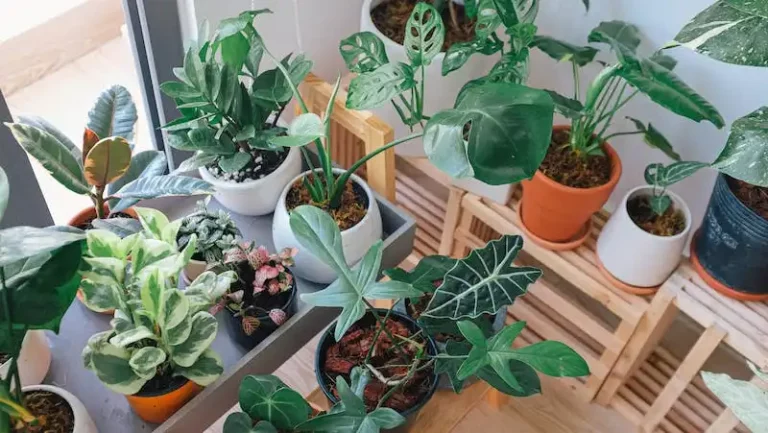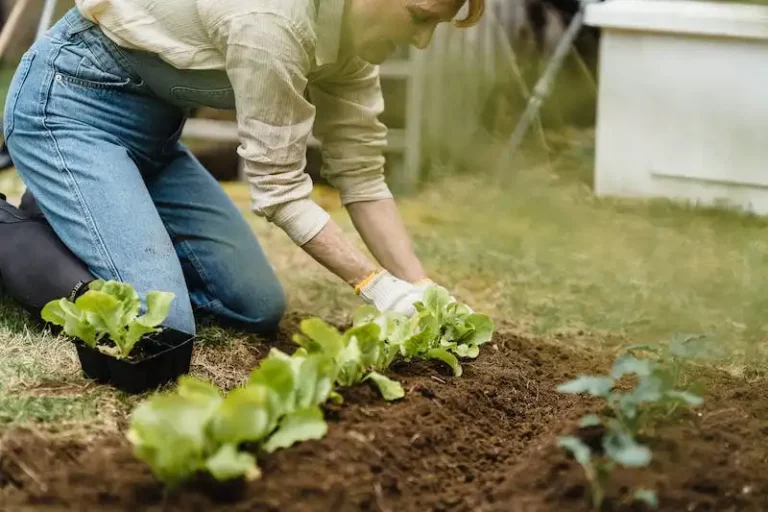Wasabi, a member of the cabbage family, is a plant which requires direct attention and care. Known for its pungent and unique flavor, wasabi is a prized addition to any dish. However, growing this plant isn’t as simple as sprinkling seeds and watching it bloom. The process requires patience, a suitable growing location, and knowledge of its specific growing requirements.
Firstly, it’s important to note that growing wasabi from seeds is a highly unreliable method. Instead, it is recommended to obtain plantlets or start with fresh rhizomes. These plantlets can take several weeks to establish themselves in the soil, so it’s important to be patient during this early stage of growth.
Wasabi thrives in shaded, cool, and moist environments. The plant prefers temperatures between 13-18°C (55-64°F) and requires a continuous supply of water. However, be careful not to overwater the plant, as this can lead to root rot. Maintaining a balanced moisture level is crucial for the plant’s success.
In terms of fertilizing, wasabi has specific nutritional needs, especially in terms of phosphorus and potassium. It is recommended to use a slow-release fertilizer, as wasabi plants are heavy feeders and require a constant supply of nutrients. Additionally, wasabi prefers a slightly acidic soil with a pH level between 6 and 6.5.
When it comes to spacing, wasabi plants should be positioned around 30cm (12in) apart in rows. This allows enough room for the roots to spread and grow properly. Planting them too close together can result in overcrowding and can lead to various issues, including the development of diseases and weeds.
Overall, growing wasabi is considered a challenging task, but the end result is well worth the effort. Its complex flavor adds a unique touch to various dishes, from sashimi to sauces. Whether you grow it for personal use or for commercial purposes, be prepared for a rewarding journey filled with bright green leaves and strong flavors.
Important note: Wasabi is not an easy plant to grow, and local conditions may present their own set of problems. Destroying these plants is easier than growing them, so growers should be prepared for challenges along the way. Nevertheless, with the right knowledge and care, growing Wasabi can be a truly rewarding experience.
Wasabi in the Garden
If you enjoy growing your own produce, wasabi is a unique and rewarding plant to add to your garden. While it may not be as common as other vegetables, cultivating wasabi can be a fulfilling experience that adds a touch of complexity to your homegrown garden.
Wasabi plants have specific requirements that need to be met in order to thrive. They prefer a moist and shady location, which can be achieved by planting them in containers or in a yard with plenty of mulch. These plants also require a humid environment, so if you live in a drier climate, you may need to simulate moisture by watering frequently or using a humidifier.
Since wasabi plants are native to Japan, they are adapted to grow in a complex soil structure, known as wasabia. This running water soil contains zero nutrients, so it’s important to provide proper nutrition through regular fertilizer application. Keep in mind that wasabi plants are sensitive to over-fertilization, so be sure to follow the recommended dosage.
Wasabi starts can be transplanted from tissue culture or seeds, but starting from seeds can be more challenging. However, if you have the patience and the ideal growing conditions, starting from seeds can be a rewarding process. The length of time it takes for wasabi plants to mature and be harvested can vary, but on average it takes around 18-24 months from transplant until the roots are mature enough to be harvested.
When the roots are ready to be harvested, they can be stored for later use. It’s recommended to remove any dirt and cut off the leaves, and then store the roots in a cool, dark place. To maintain freshness, you can wrap the roots in damp paper towels or store them in a container with moist sand. Storing wasabi roots using this method can extend their shelf life for up to several months, allowing you to enjoy fresh wasabi even when it’s out of season.
Wasabi plants are prone to certain pests and diseases, so it’s important to be vigilant and take preventive measures. Fungicide treatments and proper sanitation practices can help protect your plants against common issues. Additionally, wasabi plants can wilt easily under direct sun exposure, so providing shade or placing them in a spot with indirect sunlight is recommended.
The flavor of mature wasabi roots is highly regarded, especially in Japanese cuisine. Grate the roots finely to release their full flavor potential. However, it’s worth noting that fresh wasabi can be expensive to purchase, so growing your own can be a cost-effective alternative.
As you can see, growing wasabi in the garden requires some effort and attention, but the end result is worth it. If you have the right growing conditions and are willing to put in the time and care, you can enjoy the unique flavor of fresh wasabi while adding a touch of complexity to your homegrown culinary adventures.
Recommended Varieties
If you’re considering growing wasabi, it’s important to choose the right varieties for your conditions. These varieties are known to thrive in the specific conditions required by wasabi plants:
- Bright Light: Wasabi plants prefer bright, indirect light. They should be shaded from direct sunlight to prevent leaf burning.
- High Humidity: Wasabi plants require high humidity levels, typically around 80-90%. If your environment is naturally dry, you may need to provide additional humidity using a humidifier or by placing a tray of water near the plants.
- Well-Draining Soil: Wasabi plants prefer moist, well-draining soil. Ensure that the soil is consistently damp, but not waterlogged, to prevent root rot and other diseases.
- Controlled Temperature: Wasabi plants thrive in cool temperatures between 50-68°F (10-20°C). They are native to Japan, where temperatures are usually mild throughout the year.
- Continuous Care: Wasabi plants require consistent care and attention. They need to be watered regularly, gently misted, and fertilized every few weeks to ensure proper growth and development.
When it comes to harvesting wasabi, there are a few recommended practices to follow:
- Harvesting Plantlets: Wasabi is typically harvested by removing small plantlets from the main rhizome. These plantlets can then be replanted to grow new plants.
- Storing Harvested Wasabi: Freshly harvested wasabi should be stored in a cool, dark place. It can be wrapped in a damp cloth to maintain moisture and freshness. Wasabi can also be stored in the refrigerator, but it’s important to keep it away from other foods to prevent cross-contamination.
- Troubleshooting Diseases: Like any plant, wasabi is prone to certain diseases and pests. It’s important to be vigilant and take appropriate measures to control and prevent these issues. Some common diseases that can affect wasabi include root rot, leaf spot, and black leg. Consult a gardening guide or expert for guidance on how to identify and treat these diseases.
Overall, growing wasabi can be a challenging but rewarding endeavor. With careful attention to the specific requirements of this unique plant, you can achieve a thriving wasabi garden and enjoy the real taste of wasabi in your own home. Whether you want to use it in traditional Japanese dishes like sashimi or experiment with its unique flavor in other cuisines, growing your own wasabi allows you to have a fresh and organic source of this prized ingredient.
How to Grow
Growing wasabi can be a complex but rewarding endeavor. Many people have asked how to grow this unique plant, as it is known for its strong, spicy flavor and has a variety of culinary uses. However, it can be tricky to find fresh wasabi in many states, as it is a delicate plant that requires specific growing conditions.
When finding a location for your wasabi plants, it’s important to keep a few things in mind. The ideal spot should be shaded, as direct sunlight can cause the leaves to wilt and the roots to dry out. Additionally, the soil should be well-draining, as waterlogged roots can lead to root rot and plant death. A good rule of thumb is to choose a spot in your yard that doesn’t have standing water after a heavy rain.
Wasabi is typically grown from seed, which can be purchased online or from a reputable seed supplier. Alternatively, you can start with a small plant that has already been started. Once you have your seeds or plants, it’s time to prepare the soil. Wasabi plants have specific nutrient requirements and are prone to blight, so it’s important to use a well-balanced fertilizer and consider using a fungicide to prevent disease.
Planting your wasabi seeds or starts should be done in the fall, as the plants require a long growing season to reach maturity. The seeds should be planted about one inch deep in rows that are about 12 inches apart. Keep the soil consistently moist, as wasabi plants need regular watering to thrive.
As the plants grow, they will develop a unique root system that grows underground. This is the part of the plant that is harvested for consumption. Wasabi roots have a distinct, knobby shape and can be picked when they are about the size of a thumb. Harvesting should be done carefully to avoid damaging the plant or its roots.
After harvest, the wasabi roots can be stored in a cool, dark location for up to several weeks. Some people choose to freeze their harvested roots to extend their shelf life. However, it’s important to note that freezing can alter the texture and flavor of the root, so it may not be ideal for all culinary uses.
It’s also worth mentioning that wasabi plants can self-seed and potentially become invasive if not kept in check. To prevent this, it’s a good idea to remove any dead or dying plants from your growing area.
In conclusion, growing wasabi can be a challenging but rewarding experience. By following a few simple guidelines and providing the right growing conditions, you can enjoy this flavorful and unique condiment in your own backyard. Just remember to research the specific requirements of the Wasabi japonicum variety you are using and to keep your plants well-watered and shaded.




